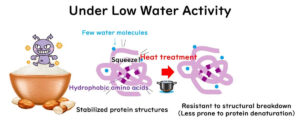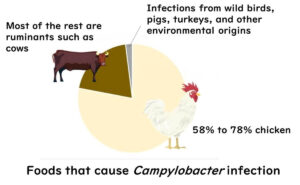It’s possible for healthy, asymptomatic food handlers infected with norovirus (asymptomatic carriers) to spread the virus, making them potential infection sources. However, there’s a lack of systematic research on the viral load, excretion amount, and duration in the stool of these asymptomatic carriers and their individual variations. Let's dive into the study by Dr. Teunis and his team from the Epidemiology Research Division in the Netherlands.
Key Findings from Dutch Researchers on Norovirus Shedding
Teunis et al.
Shedding of norovirus in symptomatic and asymptomatic infections
Epidemiol. Infect. (2015), 143, 1710–1717
Dr. Teunis’s team, based in Bilthoven, Netherlands, quantified norovirus excretion and analysed shedding patterns in a large group of 102 subjects, including asymptomatic carriers. Their study examined norovirus outbreaks in hospitals, enabling the collection and analysis of a significant number of stool samples from both symptomatic and asymptomatic individuals. Virus concentrations were measured using real-time PCR. The cohort comprised 47 patients (32 symptomatic, 15 asymptomatic) and 54 hospital staff (38 symptomatic, 16 asymptomatic).

Main Observations
- High Viral Shedding During Infection
A significant amount of norovirus is excreted in the stool during infection. - Rapid Increase in Viral Load
The viral concentration in stool increases quickly, reaching a peak within just a few days. - Slow Decline After Peak Shedding
The concentration then decreases slowly over several weeks and may remain detectable for over two months. - Comparable Shedding in Asymptomatic Carriers
The excretion level (averaging 10⁵–10⁹ virus particles per gram of stool) and duration (8–60 days) in asymptomatic carriers were similar to those in symptomatic patients. The difference in shedding levels between symptomatic patients and asymptomatic hospital staff was minimal and not statistically significant.
Point 4 is particularly significant. It implies that both symptomatic and asymptomatic carriers shed similar amounts of the virus. Dr. Teunis and his team concluded that although symptomatic individuals might spread the virus more efficiently due to frequent vomiting—a common symptom not typically seen in asymptomatic cases—the quantity of virus excreted in stool is nearly identical.
My Take on This Study

What struck me most in this study is the confirmation that asymptomatic carriers shed norovirus in quantities comparable to symptomatic individuals. This challenges the common assumption that only visibly ill food handlers pose a risk of contamination. From my perspective, the key takeaway is the silent but substantial threat posed by infected yet healthy-looking individuals.
In practical food safety terms, this has profound implications. Symptomatic staff are more likely to be identified and excluded from food handling duties, but asymptomatic carriers may continue working and inadvertently contaminate food, especially if hand hygiene is lacking. This study reinforces the critical need for rigorous hygiene protocols and frequent handwashing in all food handling environments—regardless of whether staff appear ill.
This aligns with what I have seen in food industry settings: outbreaks often occur not because protocols are unknown, but because they are inconsistently applied—especially when no one appears sick. Studies like this underline the hidden risks that make norovirus such a formidable challenge in food safety management.

※For those interested in learning the basics about norovirus, please refer to the article below.
Norovirus: Characteristics, Transmission Routes, and Effective Prevention

